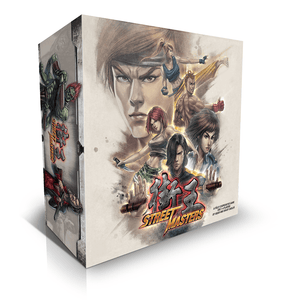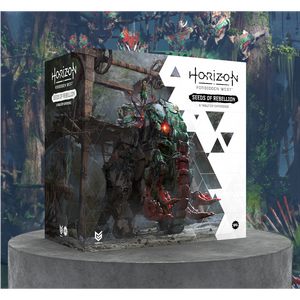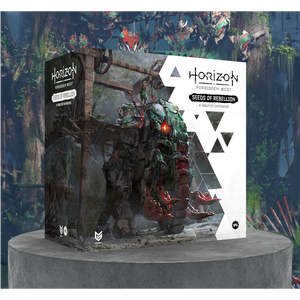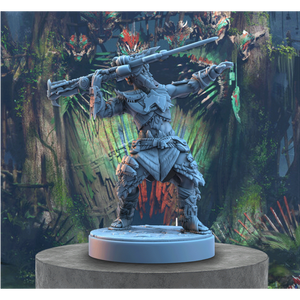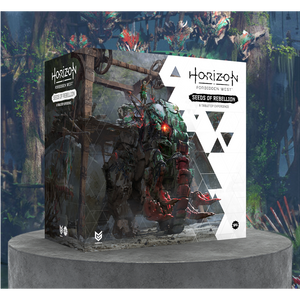Are you ready, Survivors? Resident Evil: The Board Game launches October 26 on Kickstarter in our first fully open world Kickstarter campaign!
But you’re here to hear about gameplay, right? Then let’s hand over to lead designer, Sherwin Matthews, for today’s insight into missions and reserve characters...
You’re Not Alone in the Mansion...
by Sherwin Matthews
Did the puzzles blog get you thinking? Good! Lead developer Steve and I had great fun channelling the spirit of George Trevor as we devised them, and we hope you have just as much fun puzzling them out.
But puzzles aren’t the only new mechanics in Resident Evil: The Board Game.
Today, I’m back to talk about something we’re particularly excited about, after we trialled a more streamlined version in Resident Evil 3: The Board Game to great reception.
What am I talking about? Why, the character reserve, of course!
Going Off-Camera
Something’s definitely wrong with this house...
One of the most exciting elements of Resident Evil: The Board Game is how alive the mansion feels.
Gameplay is made up of a series of scenarios which you can explore in any order you choose, and those choices are always meaningful ones. As you explore, your actions will define how dangerous the mansion becomes, as well as the types of enemies that prowl through the corridors. Decks will even change over time — some cards will be added and removed; others will evolve to gain new rules and effects.
Not only that, but the narrative events that crop up are unique, too, with multiple potential resolutions, changing your experience from playthrough to playthrough.
But we didn’t want the camera so firmly focused on your characters that we ignored the rest of the mansion. After all, for the mansion to truly feel alive, things needed to be happening elsewhere.
And you aren’t the only ones in the mansion. Come in, Bravo Team...
Rescuing Characters
Don’t be surprised if you come across other survivors. Or, if you’re too late, their remains. Those friendly faces can be a welcome break from the tension — as long as they’re still attached to the person they belong to!
If you do manage to rescue someone, they’ll be placed in your character reserve, becoming a capable ally with a new set of skills.

You can even choose to switch to that character between scenarios, if your current character needs a break. But bear in mind that any wounds your current character has won’t be erased if you put them in reserve — and the same goes for rescued characters you take out of the reserve, too.
But wait, I hear you ask. How could a character in the reserve already have wounds, if we haven’t played them yet?
Two reasons:
One, there’s nowhere safe in the mansion. Enemies won’t stop hunting you while you sit down and take five, just because you’re not involved in the current scenario.
And two, because each character in Resident Evil: The Board Game is an elite S.T.A.R.S. officer. They’re no slouches and they won’t be content to sit around and wait for instructions.
Instead, rescued survivors will fill their time searching for other survivors, making ammunition and supply runs, investigating their surroundings, and securing escape routes. And that’s where missions come in.
Sending NPC’s on Missions
“S.T.A.R.S. Alpha Team — please respond!”
New to Resident Evil: The Board Game, we’ve introduced a variety of off-camera missions that can be triggered in a number of different ways.
You might find yourself in a situation that requires an ally to dash off and find a serum to treat a wound. Or maybe there’s a crashing sound somewhere else in the mansion, and one of the reserve characters sets out to investigate.
You might even find yourself dragged away from the action to help an ally under attack...
Whatever the mission, resolution will be swift so it doesn’t slow down the game. Your main challenge will be the risk-versus-reward decisions that come with it.
So, let’s take a look at how missions work.
How Missions Work

At the start of a mission, you’ll assign a character from the reserve. Because the missions are off-camera, the way their progress is represented is simple:
At the top of the encounter cards — the cards you’ll usually draw when you enter a new area — is a series of symbols. When a character is on a mission, you’ll draw encounter cards to show their mission progress, ignoring the text to focus on those symbols instead.
For example, take a look at the top of this card:

As you can probably guess, the wound symbol is less than ideal, and is how reserve characters can pick up injuries before they’ve even entered active play.
Other cards might represent the character finding a clue or discovering an item they can bring back… if they survive.
And there’s the important part about reserve characters and missions. All characters have limited health, even those in the reserve. And any character who goes on a mission can pick up wounds.
If a character gains five wound tokens? They’ll die, as the fiends in the mansion claim yet another victim.
If you place Rebecca in the reserve with two wounds and then send her on a mission, you’d better hope it goes smoothly. But what if things go really badly?
Well, mechanically, this is a tense system designed to push your luck. At any time, you can choose to have the character abandon the mission — even if it means leaving another survivor to their fate or missing out on valuable supplies.
I guess the question is... how brave are you?
So, Are You Mission-Ready?
Thanks, Sherwin!
And that’s mission complete! Well, not quite. The Kickstarter for Resident Evil: The Board Game launches October 26, and we’re yet to share all we’ve got in store.

 Join us on Discord
Join us on Discord


